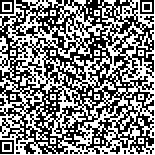下载中心
优秀审稿专家
优秀论文
相关链接
摘要

主要研究利用高分辨率WorldView-2卫星影像和双介质立体摄影测量方法进行浅海地形测绘的可行性,同时解决双介质立体摄影测量精定位算法(即折射改正算法)适用性差的问题。首先依据通用的双介质物像几何关系,提出了一种普适的双介质立体摄影测量折射改正算法;然后以海南省三沙市甘泉岛、珊瑚岛周围浅海区域为试验场,利用两个地区的WorldView-2立体影像,运用双介质立体摄影测量方法进行了浅海地形测绘试验。试验成功提取到了两个地区浅海海底的数字高程模型(DEM)。其中,甘泉岛地区的浅海DEM精度达到2.08 m(剔除其中的高程异常点后的结果)。研究表明:提出的折射改正算法,无论"空中同名光线延长线是否相交"都是适用的,且能改善浅海地形测绘精度。在水体清澈、无海浪情况下,利用相应的WorldView-2立体影像和双介质立体摄影测量方法进行浅海地形测绘是可行的。
Two-media satellite stereophotogrammetry, a combination of high-resolution satellite stereo images and two-media stereophotogrammetry, is a potential and promising method for shallow seafloor surveying, especially in areas far from the mainland. This study focuses on this method and its possible application in shallow seafloor surveying. The study has two objectives. The first is to solve the problem of poor applicability of an existing accurate positioning algorithm (i.e., refraction correction algorithm) in two-media stereophotogrammetry. The second is to explore the feasibility of shallow seafloor surveying using WorldView-2 stereo images and two-media stereophotogrammetry.
First, a universal algorithm is presented for refraction correction based on the general geometry of two-media stereophotogrammetry. Two cases are considered in the algorithm, namely, the intersection and non-intersection of the corresponding two aerial straight rays of an underwater object. The positional relationship between the transitional point and other important relevant points in two-media stereophotogrammetry is also considered. Three experiments are performed to verify the feasibility of shallow seafloor surveying using two-media satellite stereophotogrammetry and the performance of the proposed refraction correction algorithm. The first experiment uses two-media stereophotogrammetry to assess whether a Digital Elevation Model (DEM) of shallow seafloor can be derived and determine how it is derived from WorldView-2 images. The second experiment assesses the accuracy of the DEM. (Note that quantitative accuracy assessment is not carried out for the Shanhu Island area because of the lack of reference data). The third experiment demonstrates the performance of the proposed refraction correction algorithm by comparing it with the results of Murase's algorithm, which is a typical method. Two groups of WorldView-2 stereo images are used in these experiments, which show the Ganquan and Shanhu Island areas in Shansha City, Hainan Province.
Results show that the DEMs of the two areas are successfully derived from the stereo images using the proposed method. For the Ganquan Island area, the DEM obtained by our refraction correction algorithm has an accuracy of 2.08 m, while the DEM obtained by Murase's algorithm has an accuracy of 2.31 m. Previous practice suggests that the DEM accuracy of 2.08 m is satisfactory for satellite photogrammetry. These experiments show that an eligible DEM of shallow seafloor can be derived from WorldView-2 images by using two-media stereophotogrammetry, and its accuracy can be slightly improved by using our proposed refraction correction algorithm.
In conclusion, the proposed refraction correction algorithm is generally applicable because it is suitable for both two-media stereophotogrammetric cases, specifically, the intersection and non-intersection of corresponding two aerial straight rays of an underwater object point. Deriving a DEM of shallow seafloor from WorldView-2 images using the method of two-media stereophotogrammetry is feasible.

